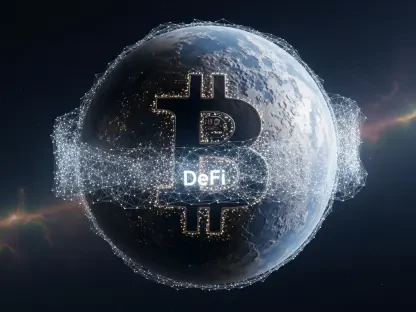Listen to the Article
New technology advancements have been affecting the entire world, reshaping what innovation means not only for businesses of all sizes but for all industries too.
The fintech has also been a victim of uncertainty, fast-paced market changes, and pain points marked by the evolution of digital transformation. And as new efficiencies continue to arise and transform the traditional financial models, fintechs are steadily becoming central players in the global economy.
It’s time to turn your attention to what will keep you ahead of the competition and help fuel your long-term vision for success.
From blockchain innovations to an AI-driven financial landscape, this article brings you an in-depth outlook on how fintech is diversifying and expanding across various sectors. Here are the key trends to watch in 2025.
Artificial Intelligence and Machine Learning Integrations
Artificial intelligence and machine learning have both been crucial aspects many decision-makers have considered in their future-focused goals. But these plans had always been focused on the distant future and the potential these technologies could develop. The emergence of generative artificial intelligence and ChatGPT has changed the game.
It’s no surprise that leaders are now reconsidering what they can achieve with such investments. As a result, both are becoming increasingly embedded into fintech platforms—being turned into the backbone of the financial industry’s digital transformation. Artificial intelligence shines by driving automation in vital areas such as risk management, fraud detection, and customer service. On the other hand, machine learning allows businesses to build more personalized products and services for a customer base with more demands than ever before.
In fact, the future is already here: AI-powered chatbots and robo-advisors are starting to upgrade the basic customer journey, providing real-time financial advice and insights based on individual preferences and behaviors. Behind the scenes, you have AI-powered algorithms that work to improve predictive analytics and help you anticipate market changes, optimize investment portfolios, and identify any emerging risks.
Decentralized Finance
Not a big chunk of customers and businesses alike trust what Decentralized Finance has to bring to the table. It remains a relatively new branch of the financial sector—and one that has yet to fully prove itself to the world. But, over the past few years, its popularity has grown. In the present, it can be considered a mainstream alternative to the traditional banking system.
How do they work? Decentralized finance platforms rely on blockchain technology to offer financial services that don’t differ too much from the legacy approach: lending, borrowing, and trading. But there’s a catch, and that’s the fact that you can engage in all of these activities without relying on intermediaries like banks.
Doing this comes with several key advantages. It reduces fees, enhances transparency, and improves access to such services for underserved populations and communities.
In 2025, its edge is growing enough that even traditional financial institutions are adopting blockchain technology and integrating decentralized finance into their operations, helping advance the branch’s sophistication and accessibility.
And as regulatory frameworks are catching up too, there are heavy chances that the collaboration between banks and decentralized finance protocols will continue to grow, leading to a merged ecosystem that creates hybrid financial models built for all consumers.
Digital Currencies and Central Bank Digital Currencies
The entire world—especially financial institutions—is now well-acquainted with both the potential and high risks associated with the usage of digital currencies. Many of them have proven to be a bust, with the initial hype often followed by disappointment and financial disaster. Yet, the race for creating a successful virtual currency goes on. Many continue to gain traction, and the adoption of Central Bank Digital Currencies is now shaped as an attractive area to be explored by financial innovators. Every G20 country has already developed projects for them, with 19 already in advanced stages of exploration and, out of those, 13 being placed in the pilot stage.
There’s a reason why there’s such resilient interest emerging toward digital currencies. In a world where consumers expect heightened convenience, they’re the key to enhancing financial inclusions, reducing transaction costs, and increasing the speed of cross-border payments. Not only some currencies remain available even after unsuccessful attempts of the past—options such as Bitcoin and Ethereum are still thriving, driven forth by institutional adoption and broader public awareness.
The introduction of digital alternatives to traditional currencies also provides central banks with a better tool to maintain monetary policy and economic control.
Quantum Computing in Fintech
Quantum computing remains, at current times, in its early stages of development. But that doesn’t mean decision-makers and leaders in the financial sector aren’t already considering its use cases—and preparing to be some of the first pioneers in leveraging its advantages.
The technology has the potential to completely revolutionize fintech. These computers use quantum bits to perform calculations much faster than classical computing, an edge that could significantly impact areas of interest such as cryptography, risk modeling, and portfolio optimization.
Where else can quantum computing benefit the modern fintech institutions? In information management, by processing vast amounts of financial data in real time, leading to more accurate predictions and informed decisions built on a foundation of resilience and long-term success. It could also enhance the security of financial transactions, making it harder for malicious actors to take advantage of unseen vulnerabilities and breach your systems.
But these plans can only be applied through the widespread adoption of quantum computing, which will only come through massive technological overhauls and the development of new cryptographic and regulatory protocols to defend advanced digital assets.
However, widespread adoption of quantum computing in fintech requires overcoming significant technical challenges and developing new cryptographic protocols to protect digital assets.
In Closing
While there are still some uncertainties and risks associated with Fintech, there’s no denying its impact on the world and the upcoming innovations that will only accelerate its development and widespread adoption. This branch of financial advancements is marked by continuous innovation, changing regulations, and a shift toward more inclusive and personalized services, which attracts customers more than ever.
Artificial intelligence, machine learning, the adoption of blockchain and digital currencies—these are all trends and market shifts impacting the sector’s fast evolution. Fintech is reshaping the global financial landscape, compelling both enterprises already established in the field and traditional banks to adapt to this era and tackle opportunities and challenges alike.









